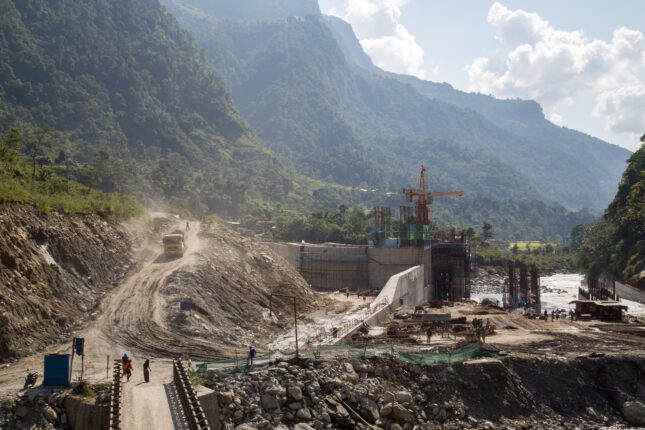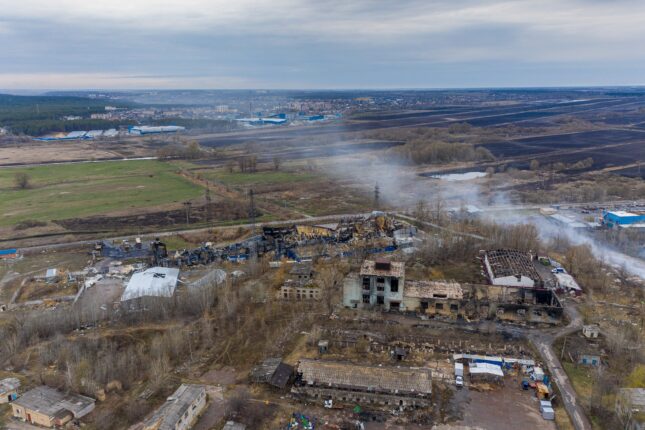-
Assessing Local Aspects of Climate Security and Environmental Peace

Climate change’s potential to aggravate insecurity, particularly through violent conflict, has created a fear that is both widespread and justified. Civil and defense ministries around the world now include climate impacts in their strategic planning, and climate security assessments have become a common policy tool.
In a 2023 UN Security Council debate, Secretary-General António Guterres warned that unmitigated climate change would create, “ever-fiercer competition for fresh water, land and other resources. The impact of rising seas is already creating new sources of instability and conflict.” And during the same session, Csaba Kőrösi, President of the General Assembly, argued that “[w]e should integrate climate analysis into our planning for conflict prevention and protection efforts, and we should recognize the significance of climate action as a key tool for peacebuilding.”
Environmental peacebuilding is a field that aims to do precisely this through research and practice seek to ensure the mainstreaming of environmental issues in peacebuilding efforts, as well as to facilitate trust and interdependence between parties through environmental cooperation. International institutions like UNEP have recently championed environmental peacebuilding as a path forward.
Yet despite practitioners’ inroads, research that integrates climate conflict and environmental peacebuilding still remains limited. Thus, a new special issue of Environment and Security addresses this gap by bringing together innovative research on the intersection of both topics.
The articles in this issue discuss a broad range of issues, including the possibilities and challenges for post-war environmental peacebuilding in Ukraine, the practice of assessing climate security risks, and the role of gender norms for the climate-conflict nexus. Moreover, the authors included in this recent publication demonstrate the importance of community voices for successful environmental peacebuilding, varying knowledge practices on environmental conflicts, strategies to reduce conflicts in regions hosting climate-related migrants, and indigenous voices in the climate conflict-environmental peacebuilding nexus.
Seeking Workable Local and Inclusive Solutions
Contributors to the new issue of Environment and Security have connected through a broader framework developed during a network project on climate-related conflicts and environmental peacebuilding. The resulting articles highlight three major lessons for both research and practice.
First, environmental peacebuilding is critical to achieving climate-resilient peace. In countries like Colombia, Syria, Myanmar, and Ukraine, reconstruction and peacebuilding must ensure that societies are resilient to extreme climatic events like heatwaves, droughts, or floods. As climate change exerts increasing pressure on agriculture, supporting food security and rural livelihoods will be important to address political grievances. Joint natural resource management also offers avenues to initiate cooperation and trust building between (former) contestants and will, therefore, be increasingly required to deal with the pressures caused by a warming climate.
Several contributions in the special issue also show that reducing climate-related security risks and building environmental peace must consider local realities. This insight draws on wider knowledge of the local turn in peacebuilding and development, which reveals that local actors’ voices and capabilities are often insufficiently considered by internationally funded and designed projects. In Nepal, for instance, a top-down water project was violently contested by residents, while a community-organized initiative both increased local water access and thereby mitigated intergroup conflicts. Community voices and networks are also crucial for programming environmental peacebuilding and managing tensions between climate-related migrants and host communities. By contrast, legal provisions designed at the national or international levels are often neither accessible to local populations, nor are they fine-tuned to local realities.
 These articles underscore why outside actors, like the EU and its support for a “green” reconstruction after Russia’s invasion of Ukraine, also need to leave space for local input. Supporting tools (such as climate security risk assessments) can help to gain significant input from local experts, and avoid one-sided dependencies and political polarization.
These articles underscore why outside actors, like the EU and its support for a “green” reconstruction after Russia’s invasion of Ukraine, also need to leave space for local input. Supporting tools (such as climate security risk assessments) can help to gain significant input from local experts, and avoid one-sided dependencies and political polarization.Third, contributors observe that there is an inherent danger in romanticizing bottom-up approaches. The need for considering potential dark sides of environmental peacebuilding is also essential. Local communities can be exclusive, prefer rapid economic development over sustainable environmental management, and share conflict-prone attitudes. To varying extent, local communities around the world also have patriarchic structures.
Environmental peacebuilding efforts which build upon and reproduce gender and other inequalities can have adverse effects. As research on Syria and Tunisia demonstrates, rigid traditional gender norms that emphasize masculine strength can increase climate-conflict risks. In such societies, unemployment and income losses caused by environmental stress can undermine masculinity norms and, hence, result in frustrations and possibly violence.
At bottom, the articles in the new issue call for careful and reflexive approaches. The research in this special edition of Environment and Security illustrates the benefits of inclusive approaches and participatory appraisals in climate change adaptation projects in Guatemala, Kenya, and Senegal.
Likewise, transdisciplinary and intercultural co-production of knowledge can improve environmental peacebuilding in places such as post-conflict Colombia. Such approaches stand in stark contrast to instrumental forms of participation, during which people in the affected areas only have minor (late-stage) input to tick the “participation” checkbox, or where outsiders selectively draw on local groups to drive their own agendas.
These insights should catalyze new, urgently needed research on climate-conflict linkages and environmental peacebuilding and help advance the broader discourse on their linkages. Together with such newly emerging research, they will also contribute to building sustainable peace in tangible ways.
Tobias Ide is Senior Lecturer in Politics and International Relations at Murdoch University and Adjunct Associate Professor at Brunswick University of Technology. He recently published Catastrophes, Confrontations, and Constraints: How Disasters Shape the Dynamics of Armed Conflicts (MIT Press).
Anselm Vogler is a Research Fellow at the Department of Geography at the Hebrew University of Jerusalem and PhD fellow at the Institute for Peace Research and Security Policy Hamburg (IFSH). His research deals with climate security policies and the wider field of environmental peace and conflict studies.
Jan Sändig is a postdoctoral researcher and co-coordinator of the Conflicts.Meanings.Transitions research network at the University of Bayreuth. His research centers on social movements and violence in sub-Saharan Africa, with a particular focus on contestations over large-scale investment projects.
Natalia Dalmer is a post-doctoral researcher at the Institute of Political Science at Leibniz University Hannover. Her research focuses on the institutional development and anchoring of environmental peacebuilding. Her book Building Environmental Peace: The UN Environment Programme as a Knowledge Actor was published by Palgrave Macmillan.
Sources: MIT Press; OUP; Palgrave MacMillan; Sage Journals; Technische Universität Braunschweig; Third World Quarterly; Third World Thematics: A TWQ Journal; United Nations; World Development
Header Photo Credit: Construction site of the Upper Marsyangdi Hydropower Project in the Annapurna Region, Bhulbhule, Nepal, courtesy of Oliver Foerstner/Shutterstock.com
In-text photo credit: The aerial view of the destroyed and burnt buildings. The buildings were destroyed by russian rockets and mines. The Ukrainian cities after occupation, Gostomel, Kyev region Ukraine, courtesy of Ivan Vasylyev/Shutterstock.com
Topics: climate, conflict, environment, environmental peacemaking, Guest Contributor, meta, security
 A Publication of the Stimson Center.
A Publication of the Stimson Center.

 These articles underscore why outside actors, like the EU and its support for a “green” reconstruction after Russia’s invasion of
These articles underscore why outside actors, like the EU and its support for a “green” reconstruction after Russia’s invasion of 




